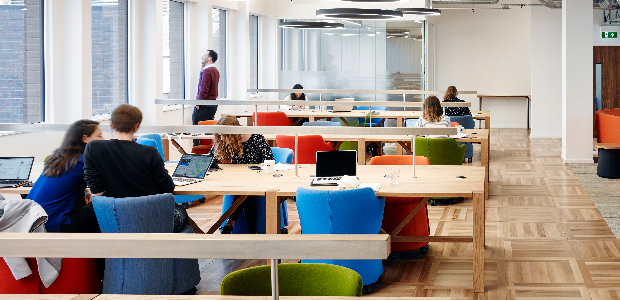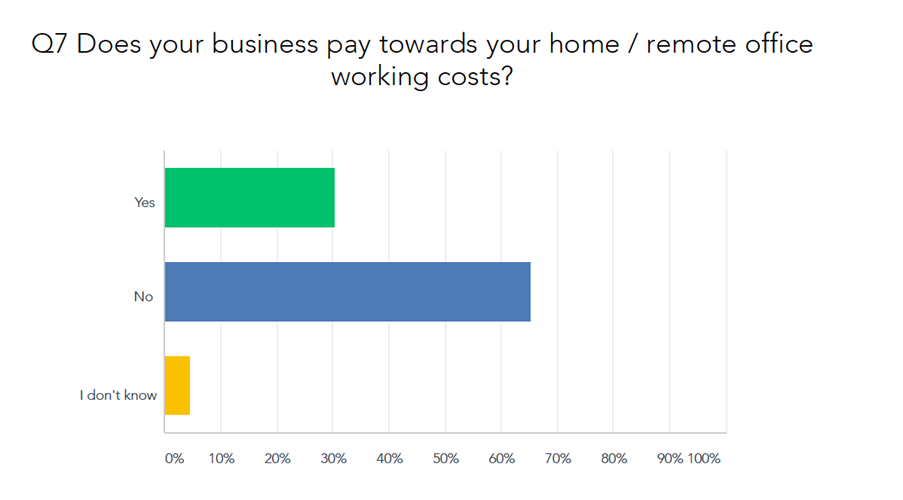
When Will We See a Return to the Office?
Over the last 30 years, there has been a steadfast campaign calling for remote working to be offered to employees. Calls for more flexible working options seemed to fall on deaf ears. Businesses were sceptical of change, unable to assess the differing productivity levels of those who worked remotely and those who worked in an office, so they consistently opted for the tried and tested. Us&Co - Professional Workspaces explores.
In 2021, it is believed that over half of the global workforce now works from home at least once a week. Long before COVID-19, remote working was facilitated through the existence of co-working spaces.
By providing spaces for individual workers and SMEs away from the noisy and unconducive work environments of coffee shops and homes, co-working spaces paved the way for more flexible working solutions. However, co-working spaces and serviced office providers are now at a crossroads; lockdown has continued, and buildings remain empty since the March 2020 exodus.
So, what will the future of workspaces look like? How should co-working spaces adapt? Is this the end of the office as we know it?
Industry experts, businesses and the media have been asking these questions throughout the pandemic, flip-flopping from "it's the death of the office" to "it will be the same as before". The simple truth is that offices will still be essential for day-to-day business. Will it be the same? Of course not; companies will need to gauge their employees’ feelings on returning to the workplace. For many, remote working has proven successful and sustainable, providing some with an improved work/life balance while others struggle with professional and social isolation.
Nevertheless, there are valid anxieties about returning to the commute and a 9-5 workday. To understand the future workplace trends, we surveyed over 700 members from Us&Co and Targetspace co-working spaces in London and Dublin to find out how they coped with working from home and how they will approach the working week once lockdown ends and a semblance of normality returns.
A Larger Emphasis on Flexible Working
Many studies and articles have compared the pros and cons of remote working with life in the office with countless contrary opinions as to which achieved better efficiency and productivity. The result was not black and white. Nonetheless, one thing is certain: people enjoy having both options. According to our survey, 80% of respondents want a good balance between WFH and the office, whether working 1 or 2 days at home or having the autonomy to choose. This is in stark contrast to 19% of respondents who favoured a fixed work setting (WFH, 11% and office, 8%).

With the ongoing pandemic and legitimate concerns of returning to the office, the power balance of where we work has shifted almost entirely towards favouring employees. This is evident, with 43% of surveyed members voicing concerns about losing the freedom and flexibility of WFH on returning to the office. More than ever, businesses will now have to invest in their employees' happiness by evaluating the individual parameters to achieve their best possible performance.

Collaborative Environments
The pandemic has brought clarity to many aspects of day-to-day operations. While it has proven to some that businesses can operate virtually with video conferencing platforms, it has made us aware of our basic need for social interaction. This 'Silent Pandemic' of professional social isolation has affected many people who have been working from home, as is clearly shown in the statistics above when very few voted to permanently WFH. Many thrive in a work environment being spurred on by the atmosphere around them.
Unsurprisingly, when asked, "What do you miss most about your workplace?", 77% of respondents claim it was the lack of face-to-face interaction. This is supported by another 54% who missed the office atmosphere. To facilitate a seamless return to the office, co-working spaces need to adapt and provide COVID-secure workplaces to build confidence and ensure safety for their members. Co-working spaces now have a unique opportunity to offer flexible solutions to this new industry requirement, a space for safe, social, and collaborative interaction.

Decentralisation
Even after lockdown, many governments mandated that social distancing measures will most likely still be in effect. Many companies may start considering decentralising their operations base opting for smaller, more flexible, and safety-oriented workspaces. Demand for co-working spaces will rise as companies search for workspaces that take the burden off their hands to provide cost-effective COVID-secure amenities and facilities.
Nevertheless, as businesses begin to review the cost benefits of decreasing their real estate footprints due to staff predominantly working from home, remote workers need to consider their costs of furnishing a health and safety compliant home office. We found that 67% of those surveyed had to pay the costs of setting up their home office. If remote working continues at this level, and everything suggests that it will, businesses will have to invest in providing their staff with ergonomic furniture and a workplace risk assessment.

Active Commuting
There are many benefits to WFH, but predictably, 79% of those surveyed believed the number one benefit was not having to commute. It then comes as no surprise that the main concern on returning to the office is using public transport. Due to this, we are likely to see a further increase in active commuting, with many people opting for cycling and walking into the office.

When Will We See a Return to the Office?
Although it may seem that everything suggests that the majority of employees are happy working from home some of the time and will continue to do so, the truth is that the majority of people also want a change of environment some of the time. The benefits of remote working come from the flexibility of movement and of schedule.
However, when you are restricted in your actions, your motivation and productivity are negatively affected even when you are at home. This is evident when the survey indicated that most respondents envision themselves back in the office by summer, with many hoping to return once lockdown is lifted.
It is now time for employers to prepare and consider the actions necessary for a gradual return to the office. Communicating with staff and providing assurances that the office is safe and ready will be critical in the following months. Meanwhile, those whose workplace is in co-working spaces and serviced offices have the peace of mind of having the support and expertise of the Operator.



